#maybe andy greenwald’s book
Explore tagged Tumblr posts
Text
just got sellout :) “someone who isnt me” is next in my music-related book collection
#i also gotta read the ljg book and major labels anddd hanif abdurraqib’s essays#maybe andy greenwald’s book#idk i dont care for genres i care for artists
10 notes
·
View notes
Note
Hello i noticed you wrote a thesis related to MCR - a friend of mine is writing one too so if you have any resources you could share that'd be really helpful!!!
Sorry for the late response, I was away from home for the week and had to wait until I was back at my computer where the articles I used are favourited. I hope it's not too late, but if it is, maybe someone else will enjoy these links.
I didn't actually write a thesis about mcr (i think i phrased my tags badly in the post you must've seen). I wrote a sociology essay about the ways that emo is constructed through the body, which involved an analysis of an anti mcr rant from 2003 punknews which I got from a thesis someone else wrote. That thesis was incredibly interesting and likely has a lot which relates to mcr that your friend could use. I unfortunately only found it when I only had time to read a few chapters, but it was so good I'd love to finish it someday. It was "It's not a fashion statement, it's a death wish": subcultural power dynamics, niche-media knowledge construction, and the 'emo kid' folk-devil by M Daschuk. It can be read here:
https://harvest.usask.ca/handle/10388/etd-06032009-151109
I didn't read much that was specific to mcr, but I could share links to some articles which I found useful or interesting in case they help? It's been a while so I don't remember as much as I'd like about which ones were good out of my long list of bookmarks.
The book Nothing feels good: punk rock, teenagers, and emo by Andy Greenwald provides a ton of history and insightful points about emo, but it stops before the point that mcr took off as far as I'm aware (I don’t think they’re mentioned). So it's kind of about a different era, but a lot of points will still be relevant. I remember it having interesting things to say about what emo means to people and gendered narratives in emo songs, and emo's relation to youth (I think there were some interesting points in the jawbreaker chapter about the adolescent quality of emo and emo fan's aversion to letting their idols grow up.)
Ridiculous suffering on youtube: digital parodies of emo style by Anna Johanssen and Hans T Sternudd was really useful for illustrating the cultural backlash against emo and how that was often tied up with homophobia, enforcing gender norms, and a callousness toward mental illness, suicidal people, and the emotionality of teenagers. I don’t have a link, but dm me if it sounds useful and you’d like some screenshots of my pdf. There was another very good article about anti emo sentiments which was based around posts in an emo forum, but I can’t find it right now. Hmu if you’re interested and I can look harder.
Exploring dress and behaviour in emo subculture by Kaci Schmitt had some good points but I don’t remember it that well. But it had some interesting things to say about glam rock influence on emo and the key areas where emo differs from glam (I.e gender nonconformity in glam having an over-the top ‘carnivalesque’, escapist quality vs gender nonconformity in emo being a punk-like expression of authenticity). Could be worth just searching the keyword glam. Can be read here:
https://digitalcommons.kennesaw.edu/cgi/viewcontent.cgi?article=1466&context=etd
This one is probably not very relevant, but I'm including it just in case because I found it interesting, it’s: Why alternative teenagers self-harm: exploring the link between non-suicidal self-injury, attempted suicide and adolescent identity. Their study finds that even when you adjust for socio-economic factors and victimisation, teenagers who identify as emo, punk or goth are still more likely to self harm or experience suicidal ideation than non alternative teenagers. Then they attempt to explain why this might be. I think one of their main guesses was that the personality profile typically drawn to these cultures might coincidentally also contain traits which leave them predisposed to that sort of thing. Another was that it was a sort of social contagion. Can be read here:
https://link.springer.com/article/10.1186/1471-244X-14-137
Sorry for making this so long and not having anything more relevant. Hope it can help a little.
10 notes
·
View notes
Text
Emo: It’s more than a phase
Think back to the darkest time of your life– a time so grim and austere that the mere thought of it transports you into the somber, inescapable void of your childhood. Now delve into the details of that cringe-worthy memory. What did you wear? What did you listen to? Where did you spend your time?
If you’re like me, your immediate thoughts went to the middle school days, more specifically, your emo phase. You know, that foggy time of self-discovery when you thought being dark and mysterious was cool? For millennials, that time took place primarily between the mid-2000s to the 2014 era. Our music tastes were defined by Jimmy Eat World and My Chemical Romance, our fashion tastes were characterized by Hot Topic and Pete Wentz, and our life was ruled by our teenage emotions.

Everyone had an emo phase, whether you realize it or not. The term “emo” is undefinable, because “it seems solely to mean different things to different people” (Greenwald 1). However, the idea that emo comes from the word “emocore” and characterizes a liberation of emotions is undebatable. A teenager’s “emo phase” is tangent to the neurobiological process of self-discovery and need to be independent. The psychologist, Erik Erikson classifies the adolescent social process as “a process of distancing oneself from the views of others, particularly parents, to form a clear sense of who one is as a person and how one wishes to behave in the world” (NCBI).
Maybe you weren’t mainstream emo, wearing all black and dying your hair purple, but you most likely had an innate sense to discover and rebel against the social expectations placed on you. If you didn’t escape through music, you escaped through art or sports or books. Either way, you yearned to have a connection to the world around you but on your own terms. You experienced emo or emotions and you lived life the way you wanted. You can deny it all you want but the fact of the matter is, you had an emo phase.

Now that you’ve started to accept the fact that you were emo, I’m going to mess with your mind even more. Emo is not just a phase. It isn’t like that time you were really craving those chicken nuggets from Chick-fil-a or even that time you promised yourself you would give up sugar. Emo is still a part of you today. I don’t care if you’re 15 or 50, you are still innately emo.
To help you understand, I’m going to contradict myself and give emo a definition; better yet, I’m going to put it into a formula for all you STEM people.
Emo=Emotion.
In other words, emo applies to anyone who has ever expressed their inner emotions in any way and it is a vital part of our society today. A world without emotions is scarier to think about than the memories of your troubled middle school days. Maybe we need more emo people.
Emo music paved the way for inward expression through means of art. Whereas punk rock was created to help express a rejection of politics, emo had an emotional complexity and underlying thread of sensitivity. Bands like Rites of Spring and Jawbreaker created poetic lyrics which acknowledged weakness and the human condition. 3rd wave emo bands like Dashboard Confessional proved that emo could be more than loud music and could invoke deeper feelings than hate and anger. These bands continue to play a role in our life–in a way it made us into who we are today. For many people, music completely changed their lives. In the book Song Stories: Music That Shaped Our Identities and Changed Our Lives, author Kyle Bylin reflects on personal accounts of how music has changed people’s lives. For example, Marc Ruxin’s musical tastes were changed when The Velvet Underground’s “Oh! Sweet Nuthin’” played one night at a friend’s place. Cortney Harding’s romantic notions of adulthood were set by Elliott Smith’s “Between the Bars” (Bylin). In addition, the music you like when you are 20, you’ll most likely still enjoy when you’re 80. Music has the power to change us, even if that music is emo. It stays with us until we die, even if it is buried in the back part of our minds.
Recall when I made you think back to the darkest time of your life. Were you able to remember the music you listened to or the places you spent your time at? It may have been hard to conjure up but you did. Those memories will always be with you, as will the part of you that is emo. Emo isn’t just a phase, it’s a part of you.

Bylin, Kyle. Song Stories: Music That Shaped Our Identities and Changed Our Lives. Music: My Religion Press, 2016.
GIPHY. “Emo GIFs - Get the Best GIF on GIPHY.” GIPHY, GIPHY, giphy.com/explore/emo.
Greenwald, Andy. Nothing Feels Good: Punk Rock, Teenagers, and Emo. St. Martin's Griffin, 2003.
Institute of Medicine (US) and National Research Council (US) Committee on the Science of Adolescence. “The Psychology of Adolescence.” Advances in Pediatrics., U.S. National Library of Medicine, 1 Jan. 1970, www.ncbi.nlm.nih.gov/books/NBK53420/.
2 notes
·
View notes
Text
Stuck Inside Media Diary Week 5
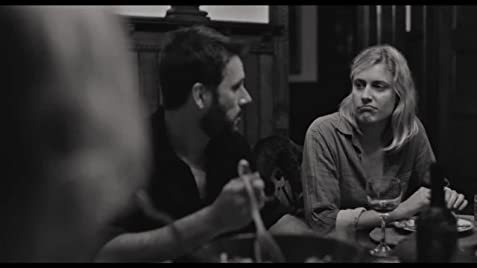
I realized the last movie I saw in theaters was Little Women for the third time. Then that got me thinking about how I ranked my Top whatever movies from last year and inconsequential ranking things is. It was probably the movie that makes me feel the best; it and Knives Out were the two movies I saw the most in a theater last year and they were both the ones that I get excited talking about with people. Good flicks, you should check ‘em out. (I also re-learned recently that Emma Stone was originally supposed to play Meg who was played by Emma Watson. Had this happened, my brain would’ve collapsed due to trying to figure out how to balance crushes on Greta Gerwig, Saoirse Ronan, Florence Pugh, Laura Dern and Emma Stone all in the same thing).
Sunday, April 19
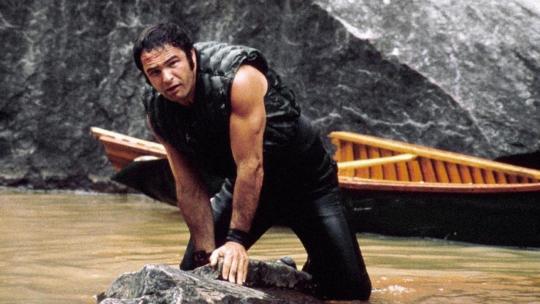
Deliverance, Boorman 1972
On the one hand there is no real way to prepare you for how awful the assault on Ned Beatty and John Voight scene is as well as having me wonder if this was actually a Vietnam movie masked in something about the destruction of the natural world (maybe it’s both or just one). On the other hand, I thought it’d be funny to compare the characters to this to the characters in American Pie, but there’s no Stiffler or Jim’s Dad in this movie, so it doesn’t completely work.
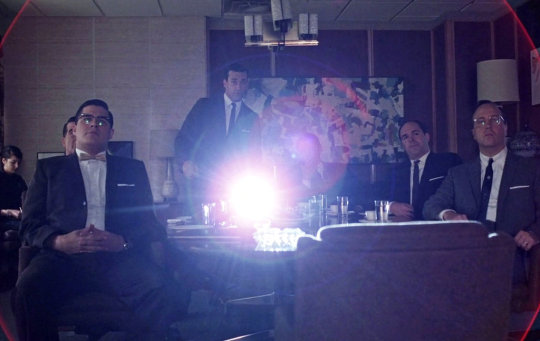
Mad Men, “Long Weekend”, “Indian Summer”, “Nixon Vs. Kennedy”, “The Wheel” [season 1 finale]
There’s two things I’ll never forget the first time I ran through the first season of Mad Men: 1. Thinking “is Don even good at his job? I don’t think we’ve even seen this guy even really do his job yet, how did he become partner?” and then “The Wheel happens”. 2. I had let one of my favorite History teachers borrow my DVDs (this would happen again in my life when I later lent my English teacher The Wire when I was a senior two years later) and when he finished the first season he and I talked about what dumb-dumb idiots we were because we hadn’t figured out that Peggy was definitely pregnant and were surprised by this revelation, while his girlfriend at the time figured it out instantly.
Parks And Rec, “Greg Pikitis”, “Ron And Tammy”
That these two episodes were on back-to-back was probably the moment in the public consciousness that Parks was the real deal. How could you not; I watch “Greg Pikitis” every Halloween.
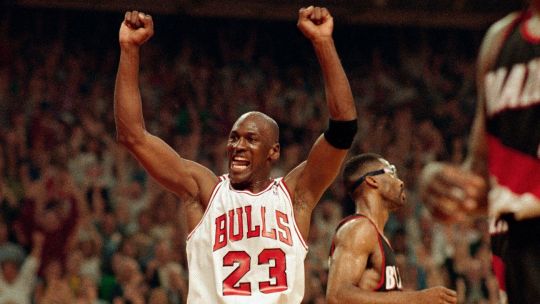
The Last Dance, Parts 1 & 2
I can’t remember the last thing I watched in real time on the tv. It’s very possible, though I don’t think so, that The Last Dance might be quarantine great and in real life very, very good. It doesn’t really matter, because this thing is just crazy fun to watch, as a person who was not able to watch Jordan basketball and sometimes thinks that Gen Xers gets way too [whatever that Spongebob meme is where you capitalize every other letter in a sentence] about Michael Jordan. The music cues are God-tier.
Joe Pera Talks With You, “Joe Pera Shows You Iron”, “Joe Pera Takes You To Breakfast”, “Joe Pera Takes You On A Fall Drive”
“Joe Pera Takes You To Breakfast” might be one of the funniest episodes of television I’ve seen in a long time. As someone who takes too much enjoyment in stream of consciousness humor, I might be too in the bag for this show. I certainly don’t know how to sell it to any of you, other than it might be the perfect counterpart to Review. That could just be that Joe Pera looks like an alt-universe Andy Daly or it could be that Forrest MacNeil could’ve, desperately, used a friend like Joe Pera if only just to see how they’d interact with each other.
Monday, April 20
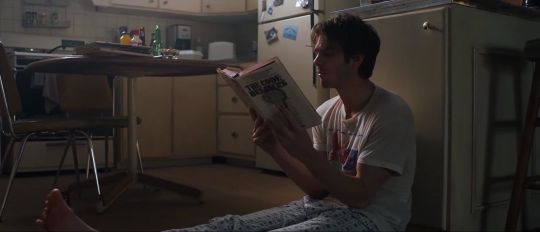
Under The Silver Lake, Mitchell 2018 [as of now this is available on Prime]
I’m embarrassed that I caved into watching a stoner movie on 4/20, but I’m glad it was this. This weird, gross and beautifully shot weird little movie that really did some good work in reminding me that Andrew Garfield is good. People will argue that this broke his brain, when in reality it was those two embarrassing Spider-Man movies.

Joe Pera Talks With You, “Joe Pera Shows You How To Dance”, “Joe Pera Talks You Back To Sleep”, “Joe Pera Reads You The Church Announcements”
So “Church Announcements” was the first episode of this show that I had ever seen, because I had three different friends recommend it to me because I had posted something about “Baba O’Riley” very off-handedly, not even knowing this episode existed. It’s probably the purest expression of joy and one of the most sincerely happy things I might have ever seen. I love this show so much.
Tuesday, April 21
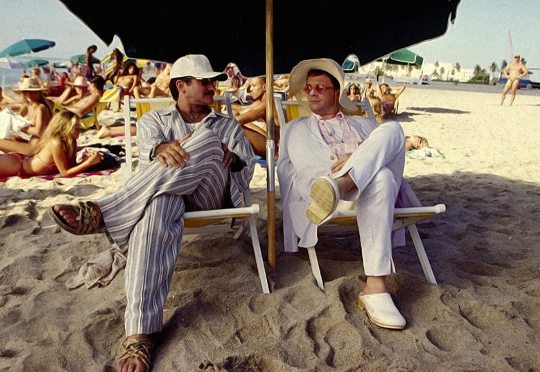
The Birdcage, Nichols 1996 [as of now this is available on Prime]
This is a good reminder that Nathan Lane is insanely talented and easily one of the most undervalued performers alive. I wanted to watch a Gene Hackman movie and this was available and it’s pretty good. Sometimes plays shouldn’t be turned into movies, that’s my take here-what do you want from me.
Better Call Saul, “Something Unforgivable”
Safe to say Saul’s got the belt. I was listening to Greenwald and Ryan the other night and someone had throughout a hypothetical to them that if they could would they want Gilligan and the gang to to remake Breaking Bad now, and have that (essentially) be the spin-off from Saul instead of vice-versa. That then got me thinking about if there’s ever been a property that’s taken place within the same universe that waited almost a season and a half to introduce the character (or thing) that connected the two things? There’s probably some kind of sci-fi or fantasy story that nerds would be eager to inform me of and it’s called 2une or something like that. Cool if so! If not, then no one steal my idea, this could be huge.
Joe Pera Talks With You, “Joe Pera Lights Up The Night with You”, “Joe Pera Talks to You About the Rat Wars of Alberta, Canada (1950–Present Day)”, “Joe Pera Answers Your Questions About Cold Weather” [Season 1 finale]
“Can you believe those jag-offs through a New Year’s Eve party with just one bottle of Disarooney” is something I just say out loud when I’m frustrated now. I stayed up until like 3AM last Tuesday wrapping up the first season.
Wednesday, April 22

The Stranger, Welles 1946 [as of now this is available on Netflix]
First Orson Welles movie. It was fine! I don’t really think it should’ve been an hour-and-a-half long, but I was also surprised that they were already making movies about Nazis escaping to the US in 1946, but I’m definitely not a historian and I’m sure a lot of things would surprise me about 1946. It’s also a public domain movie which is just kinda....weird and would probably piss off Orson Welles or maybe he’d be thrilled.

Ferris Bueller’s Day Off, Hughes 1986 [as of now this is available on Netflix]
Maybe the best use of a Beatles song in a movie that doesn’t star The Beatles? I used to go back and forth on whether or not I like this movie, because so many people do like it and I used to be loathe to conform to non-controversial opinions. But something I think that gets really overlooked is how well this movie is shot-Hughes had a real eye for framing and blocking. Or maybe people talk about this all the time and I just haven’t cared to ever listen or seek it out.
The Plot Against America, “Part 2″
Mad Men, [Season 2 premier] “For Those Who Think Young”, “Flight 1″
I had forgotten how GD disorienting this show can be when it goes out of its way to not tell you how much time has passed between each season (it’s like 15 months this time). That’s all I’ve got now, that and Duck Phillips: welcome back into my life, you sick son of a bitch.
Joe Pera Talks With You, [Season 2 premier] “Joe Pera Talks With You About Beans”, “Joe Pera Takes You On A Hike”
Thursday, April 23
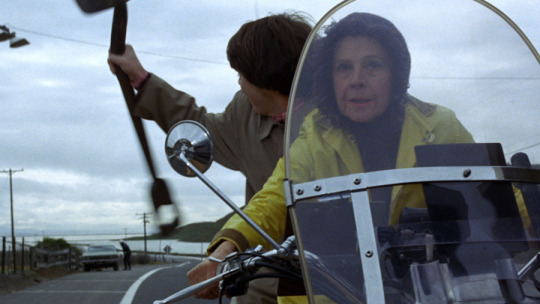
Harold And Maude, Ashby 1971 [as of now this is available on Prime]
Another entry in the “I didn’t realize how many movies try to be this one” book. Really funny, and so shockingly dark, I can’t imagine how much people hated this when it first came out and how hard of a sell it would be to try and talk someone into seeing it. Probably what I liked most about it was how earned the sense of finding joy in life is in this movie, considering how cynical it is in depicting the fetishization guys tend to do with the notion of suicide. It’s quirky without being twee (if you want that, I guess go to Rushmore, a movie I adore, but definitely borrows heavily from this, something Anderson wouldn’t ever deny).
Mad Men, “The Benefactor”, “Three Sundays”
Harry Crane’s campaign to be the least liked person in Mad Men, you could argue, starts more-so here than it did in the finale of S1 when he cheats on his wife.
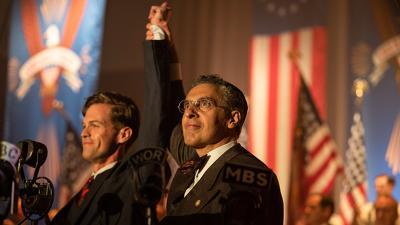
The Plot Against America, “Part 3″
I don’t think anything, Television-wise, has benefited less from the pandemic than TPAA. Of course it would happen to a David Simon show and maybe it’s a good thing, considering how the number of bad takes would greatly outweigh the number of good takes that would come about if there was some more attention on it.
Joe Pera Talks With You, “Joe Pera Waits With You”, “Joe Pera Guides You Through The Dark”
I can’t remember the last time I laughed as hard as I did when they started demonstrating the different hair styles you can get when getting your hair cut. These episodes have somehow gotten goofier than the first season and it’s, uh, really good.
Friday, April 24
Parks And Recreation, “The Camel”
Top Chef, Season 17 episode 6
Brooklyn Nine-Nine, “Lights Out”
Dan Goor & Luke Del Tredici is to Brooklyn Nine-Nine as Michael Schur & Aisha Muharrar was to Parks And Recreation.
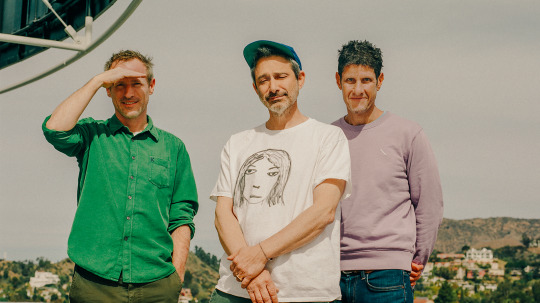
The Beastie Boys Story, Jonze 2020 [available on AppleTV+]
As with any kind of retrospective, there’s a fair amount of yadda-yadda-ing and maybe not everything totally works with this live-documentary, but it’s so deeply Beastie Boys that I can’t help but just be so grateful that it exists. While it’s like a vaudeville symposium it is absolutely doubles as a love letter to a departed friend and immense talent. The worst thing that could happen is that it’ll just make you want to re-listen to the gods.
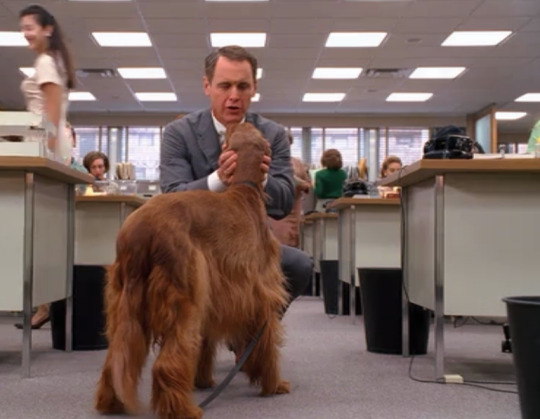
Mad Men, “The New Girl”, “Maidenform”
I just can’t believe that Chauncey exits the series the same episode that he enters.This was and still remains the turning point of Duck Phillips: terrible human (and kind of when he turns a little cartoonish).
Saturday, April 25

Parks And Recreation, “Hunting Trip”
Mad Men, “The Gold Violin”, “A Night To Remember”, “Six Month Leave”, “The Inheritance”, “The Jet Set”
Quite a run of episodes here for ole Mad Men here. Always love when they remind us that everyone really underestimates Ken Cosgrove (even himself). And as I was watching “Six Month Leave” it kind of hit me that this is an outlier episode of Mad Men. It’s so much of a whole that I find it hard to put one episode above another, but if I needed just an episode of Mad Men to watch at random like a year or so from now, this is one that would really stick out to me. A great farewell to a great Murray brother.
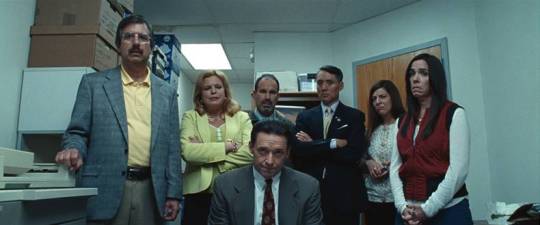
Bad Education, Finley 2019 [available on HBO Now/Go]
It sucks that HBO makes more bad movies than it does good, but when they’re good, man they’re really good. It hits some HBO movie bingo squares which are kind of eye-rolley to me, but all-in-all, this is a really outstanding little movie. It feels weird that it’s taken this long for Ray Romano to start carving out a character actor niche for himself, but I’m just happy we’re finally here! I saw someone compare it to or with Wolf Of Wall Street and as someone not from Long Island I feel confident in saying that they’re a helluva Long Island scum-bag (repetitive?) double feature.
The Plot Against America, “Part 4″
Was really hoping this was going to be the thing that made people remember that Winona is incredible and not Stranger Things, but that’d require like a dozen monkey’s paw wishes that I just don’t have. (What a world it’d be if The Plot Against America adaptation somehow eclipsed Stranger Things in terms of cultural significance) However badly I wanted that though, this has really been Zoe Kazan’s show-a quieter role than Anthony Boyle (who I am also just floored by) but more effective in how much internal processing she’s doing with this character.
Joe Pera Talks With You, “Joe Pera Takes You To The Grocery Store”, “Joe Pera Goes To Dave Wojcek’s Bachelor Party With You”
0 notes
Note
what bands are True Emo? bc when i think of emo i think of lo-fi but i'm pretty sure that's bc i'm 18 so i wasnt around for the Real Emo Tunes :(
i’mma answer this publicly because i needed the excuse to be entirely self indulgent, k?
wait. hold on.
*puts on grad school hat*
so my answer/view on what counts as “emo” is really heavily influenced by this book, Nothing Feels Good, its been years now since i’ve read it, but it includes (may be wholly?) a history of the development of emo as a genre, as well as profiles on some really well known bands. what’s super cool about it is that it was very of the moment. it was published in 2003, which is when emo was gaining mainstream notoriety amongst rock circles, but was nowhere near the cultural zeitgeist it became.
so if you ask me, i’d argue, as andy greenwald identifies in Nothing Feels Good that “true emo” bands would include the likes of Rites of Spring, Sunny Day Real Estate, Jets to Brazil, Mineral, American Football etc*. There’s a really interesting idea that Dan kept kind of bumping up against but didn’t really articulate–that late 00′s emo and the indie music that was fucking exploding around that same time (so, your Death Cab for Cuties, Minus the Bear, Yeah Yeah Yeahs, etc) actually have a common ancestor in the early 00s emo that was coming out of places like DC and further Northeast (as far North East as…New Jersey, eh? eh?). But Dan says some bullshit about the indie guys not liking the emo guys, not exactly? Like sometimes indie guy and the emo guy were the same dude.
And that dude was a dude who was into the hardcore scene/punk, but who wanted to sing about his feelings and heartbreak, and mental health issues, things that were seen as more feminine and less aligned with the more masculine, more politically charged punk/hardcore scene.
And so you have bunch of dudes doing this, with differing levels of alignment with the hardcore scene. On one end of the spectrum you’ve got your Thrices, your Alkaline Trios and on the other end you’ve got your Sunny Day Real Estates, or even further, your Dashboard Confessionals where he’s not even using an electric guitar.
This, btw, is part of why you’ve got both Death Cab for Cutie and AFI on the same list of bands that are “emo” on wikipedia. The whole emo genre was actually super fucking prolific and because the genre qualifications were so vauge (its “emotional” “rock” music. that’s a lot of musical space to play in) a lot of different sounds were able out of early 00s emo.
Mix emo with hardcore? You get Thrice.
Mix emo with goth? AFI and Hawthorne Heights
Mix is with metal? You get Coheed and Cambria, I guess??
Mix it with rap? Dear god you get Brokencyde, undo undo.
And if you mix it with pop? Well shit, you just built a Fall Out Boy.
So, Dann, you say, I didn’t need any of this.
I mean that’s fair, but I’m sure you’re also wondering where the fuck My Chem, P!atD and FOB come in.
Wikipedia makes the really helpful delineation of emo and emo pop, which is like…sociologically accurate, even if I feel like its not generically accurate. Like, MCR and Panic! at the Disco are two very different genres of band.
Those three bands, along with a glut of other bands in the mid-00s somehow managed to ride the wave of popularity that started with these early 00s emo bands. I don’t want to make it sound like these bands aren’t significant, like these are people who were and are at the top of their craft (and pete wentz). but they were also pretty lucky. they came up in a time when not only indie bands but indie labels were experiencing pretty unprecedented public attention, MTV was still showing music videos, but maybe more importantly Fuse was still showing music videos. There was a whole TV station dedicated to “alt” music (how do people even find music these days? Spotify?).
Now why were those three bands the ones that made the catapult from Fuse to MTV (so from very very popular alt/indie to straight up popular)?
Teenage girls.
See, emo came out of punk spaces in the mid-to-late 90s, and these spaces (at least the spaces that these particular guys were in) were, more often than not, pretty white/male spaces. Emo might have been about girls, so many girls—girls who agreed to date you, girls who agreed to fuck you, girls that dared to stop fucking you, girls that broke your heart—but it wasn’t really for girls. People who talk about rap music being the most misogynistic genre haven’t sat down to listen to emo. My god were some of those dudes upset about getting dumped.
But pop music.
Pop music has been the bread and butter of girls, young girls since what, the 1950s aka its inception? Teenage girls created pop music.
And teenage girls decided they liked this emo stuff. And they decided they liked those emo boys. Really they decided they liked MCR and FOB and then Pete Wentz bore panic and lo, the teenage girls decided, it was good.
(Brendon Urie and Harry Styles ought to sit down and have a talk sometime about how they owe their whole career to teenage girls finding them appealingly non-threatening)
You know why MCR and FOB were so dedicated to “equality” and their pits being “safe” (back when they had pits) and also challenging gender norms in a way that happened to be acceptable (and lbr titillating) to teenage girls?**
Because teenage girls chose them and Made. Them. Rich.
You don’t get rich of teenage girls aren’t coming to your shows/in your pit because they might get hurt. You don’t get rich when homophobic assholes, that are also sexist assholes, are coming to your show.
Don’t get me wrong. There were boys there. Obviously. Sensitive boys that didn’t fit in with the jocks, bullied for acknowledging their feelings etc. But teenage girls created the Scene.Christ, what was your question?Ok, yeah. You’re pretty spot on thinking of emo as being a low-fi, diy thing, if you’re thinking of it from the same direction I am. But the cultural moment Dan is talking about is defined way more by emo pop/scene than what I personally would call emo.* I mentioned an emo revival in an ask earlier today/yesterday. A lot of those bands are “reviving” the sound of early 00s emo. Which is interesting.**there’s a whole fucking book in the concept of stage gay alone. also the trend of “emo boys kissing” videos. these things are connected, obviously but I can’t quite say how.***this is a tumblr ask answer, so I can’t get into things like the effect of the internet, the breaking down of the fourth wall for fandom, why you can thank/blame Jimmy Eat World for all this, why DIY punk these days sounds the same as emo if you ask me, etc.****yeah I wrote that whole teenage girls made the scene diatribe and didn’t mention Paramore once. Paramore changed the fucking game and there’s a reason every emo band with a girl got compared to them.
#ask me a thing#yes. this is why i still identify as a scholar.#looseleaflettuce#this is a full 3 pages long#i'm not even sorry
144 notes
·
View notes
Text
Revive Booklr Tag
Huge thanks to @lizandbooks for tagging me! I’m trying to get more involved with the Tumblr/Booklr community and these are a great way of doing it.
Rules: If tagged, answer the original questions and either add to the list or delete some (if you’d like), then tag more people!
Which book are you currently reading? Royal Assassin (Farseer Trilogy – Book 2) by Robin Hobb. I finished the first book on Wednesday and am looking forward to getting my teeth in to the next installment. It’s been a while since I’ve read a series of books back to back.
What’s your Hogwarts house? I have no idea, there’s a test on Pottermore right?
If you could get on a plane right now, where would you go? (Yes, fictional places are good as well. You could also travel via wardrobe/train/etc.) I’d like to go back to Japan, I’ve been reminiscing about my trip a lot recently and would go back in a heartbeat. In terms of fiction, I’d love to visit Hogwarts or Hogsmeade. I nearly forgot The Shire…how could I forget The Shire!!!
Speaking of, what fictional character would you wish to travel with? Any Murakami character, there’s always jazz bars and crazy random stuff happening which would always keep the trip interesting. I’d also love to travel worlds and time with Roland Deschain but I’d probably get killed or he’d kill me…one way or another I’d end up dead in the world of The Dark Tower. Jay Gatsby would always make for an interesting travelling companion as would a group of Hobbits, maybe not together although that would make a great crossover novel, Gatsby and the Hobbits…okay so I need to work on the title.
When do you put your Christmas decorations up? The first weekend in December. I’m not waiting until the 12th.
Are there any books you want to recommend to the rest of us? So so many…but I’ll stick to a couple. Nineteen Eighty-Four – George Orwell, White Fang – Jack London, A Hundred Years of Solitude – Gabriel Garcia Marquez, The Old Man and the Sea – Ernest Hemingway are all obvious classics but here’s a few of you might not have heard of… Miss Misery – Andy Greenwald, The Shadow of the Wind – Carlos Ruiz Zafon and A Man Called Ove by Fredrik Backman. Oh and if you get the chance read the short story ‘Teddy’ by Salinger…amazing!
What is your favourite nonfiction subject to read? Autobiographies. Although I have only read about 2 in the last 2 years.
What types of book covers do you find most aesthetically pleasing Artsy ones, either minimalist or something that looks like Wes Anderson designed it. I’m not a fan of movie covers as I don’t like a pre-conceived idea of what the characters look like, I prefer to create their appearance in my head. That sounds so pretentious but it isn’t, I promise.
Favourite book you’ve read this year? As its only been 20 days and I’ve read just one novel, I’m going to do this for 2016 and my favourite novel of that year was either Mort by Terry Pratchett or A Farewell To Arms by Ernest Hemingway.
If you set yearly goals for yourself, how many books would you like to read in 2017? Last year my target was 30 and I made it! But this year I want to take it steady and read at my own pace and for my own enjoyment rather than a number. Saying that, I’d still like to get through around 20.
What book has been on your TBR the longest? Through The Eyes Of The Dragon by Stephen King, that’s been on my shelf for at least six years. I WILL read it this year lol.
Who are some of your book girlfriends and/or boyfriends? Cath Kennedy from Miss Misery by Andy Greenwald, Alaska Young from Looking for Alaska and Ramona Flowers from the Scott Pilgrim series…all characters I’d have killed to have known during my teens…I definitely have a type lol. Oh and Sam from Perks of Being a Wallflower.
Tagged - Trying to pick different people than yesterdays tags but please feel free to join in even if your not below! @callehluff @acrossmyfictionaluniverse @antstepsbooks @lolahbell @almostsquamous @d0nutfearthereaper @mrcha1nsaw @f0iblesandfancies @oranginaqueen
7 notes
·
View notes
Link
I simply cannot substantiate the effort it takes to give a flying fuck about the genre/plague that we know as emo songs that don’t consider the world beyond boy bodies, their broken hearts or their vans. Meanwhile, we’re left wondering—how did we get here?
It’s evident from these bands’ lyrics and shared aesthetic that their knowledge of actual living, breathing women is notional at best. Emo’s characteristic vulnerabile front is limited to self-sensitivity, every song a high stakes game of control that involves “winning” or “losing” possession of the girl (see Dashboard Confessional, Brand New, New Found Glory, and Glassjaw albums for prime examples). Yet, in the vulnerability there is no empathy, no peerage or parallelism. Emo’s yearning doesn’t connect it with women—it omits them.
As Andy Greenwald notes in his book about emo culture, Nothing Feels Good: Punk Rock, Teenagers, and Emo, lyrically, emo singers “revel in their misery and suffering to an almost ecstatic degree, but with a limited use of subtlety and language. It tends to come off like Rimbaud relocated to the Food Court.” Women in emo songs are denied the dignity of humanization through both the language and narratives, we are omnipresent yet chimerical, only of consequence in romantic settings.
There must be some discussion, at least for context, about the well-worn narrative of the boy rebel’s broken heart, as exemplified by the last 50-plus years of blues-based music, that there are songs about loving and losing women; that men writing songs about women is practically the definition of rock ’n’ roll. And as a woman, as a music critic, as someone who lives and dies for music, there is a rift within, a struggle of how much deference you can afford, and how much you are willing to ignore what happens in these songs simply because you like the music.
Can you ignore the lyrical content of the Stones’ “Under My Thumb” because you like the song? Are you willing to? Or the heaping pile of dead or brutalized women that amasses in Big Black’s discography? Is emo exceptional in the scope of the rock canon either in terms of treatment of women or in its continual rubbing salute to its own trouble-boy cliché image? Is there anything that separates Dashboard Confessional’s condemnation of his bed-hopping betrayer and makes it any more egregious than any woman/mother/whore/ex-girlfriend showing up in songs of Jane’s Addiction, Nick Cave, The Animals or Justin Timberlake? Can you forgo judgment woe to women in the recorded catalog of Zeppelin because the first eight bars of “Communication Breakdown” is total fucking godhead? Where do you split? Do you even bother to care, because if you’re going to try and kick against it, you, as my dancing friend says, “have a problem with all of rock history,” and because who, other than a petty, too-serious bitch dismisses Zeppelin?! Do you accept the sexism and phallocentricity of the last few decades of popular music and in your punk rock community as just how it is?
Who do you excuse and why? Do you check your politics at the door and just dance or just rock or just let side A spin out? Can you ignore the marginalization of women’s lives on the records that line your record shelves in hopes that feigned ignorance will bridge the gulf, because it’s either that or purge your collection of everything but free jazz, micro house 12”s and the Mr. Lady Records catalog?
It’s almost too big of a question to ask. I start to ask this of myself, to really start investigating, and stop, realizing full well that if I get an answer I might just have to retire to an adobe hut in the Italian countryside and not take any visitors for a long time. Or turn into the rock critical Andrea Dworkin, and report with resignation that all music made by men propagates the continual oppression and domination of women. Sometimes I feel like every rock song I hear is a sucker punch toward us. And I feel like no one takes that impact seriously, let alone notices it. It is “just” music.
My deepest concerns about the lingering effects of emo is not so much for myself or for my friends—we have refuge in our personal-political platforms and deep-crated record collections—but rather for the teenage girls I see crowding front and center at emo shows. The ones who for whom this is their inaugural introduction to the underground, whose gateway may have been through Weezer or the Vagrant America tour or maybe Dashboard Confessional’s Unplugged. The ones who are seeking music out, who are wanting to stake some claim to punk rock, or an underground avenue, for a way out, a way under, to sate the seemingly unquenchable, nameless need—the same need I know I came to punk rock with. Emo is the province of the young, their foundation is fresh-laid, my concern is for people who have no other previous acquaintance with the underground, save for these bands and their songs.
When I was that age, I too had a hunger for a music that spoke a language I was just starting to decipher, music that affirmed my ninth grade fuck-you values—music that encouraged me to not allow my budding feminist ways to be bludgeoned by the weight of mainstream, patriarchal culture—I was lucky I was met at the door with things like the Bikini Kill demo, Fugazi and the first Kill Rock Stars comp. I was met with polemics and respectful address; I heard my life and concerns in those songs. I was met with girl heroes deep in guitar squall, kicking out the jams under the stage lights. I was being hurtled toward deeper rewards. Records and bands were triggering ideas and inspiration. I acknowledge the importance of all of that because I know I would not be who I am now, doing what I do, 12 years down the line, if I had not had gotten those fundamentals, been presented with those big ideas about what music and, moreover, what life, can be about.
So now I watch these girls at emo shows more than I ever do the band. I watch them sing along, to see what parts they freak out over. I wonder if this does it for them, if seeing these bands, these dudes on stage, resonates and inspires them to want to pick up a guitar or drum sticks. Or if they just see this as something dudes do, since there are no girls, there is no them up there. I wonder if they see themselves as participants, or only as consumers or—if we reference the songs directly—the consumed. I wonder if this is where music will begin and end for them. If they can be radicalized in spite of this. If being denied keys to the clubhouse is enough to spur them into action.
I know that, for me, even as a teenage autodidact who thought her every idea was worthy of expression and an audience, it did not occur to me to start a band until I saw other women in one. It took seeing Babes in Toyland and Bikini Kill to truly throw on the lights, to show me that there was more than one place, one role, for women to occupy, and that our participation was important and vital—it was YOU MATTER writ large.
I don’t want these front row girls to miss that. I don’t want girls leaving clubs denied of encouragement and potential. As lame as punk rock can be, as hollow as all of our self-serving claims ring—that the culture of punk is truly different somehow than that of median society—at its gnarled foundations still exists the possibilities for connection. There is still the possibility for exposure to radical notions, for punk rock to match up to what many kids dream, or hope for punk DIY to mean. But much of that hinges on the continual presence of radicalized women within the leagues, and those women being encouraged—given reasons to stay, to want to belong—rather than diminished by the music which glues the community together.
Us girls deserve more than one song. We deserve more than one pledge of solidarity. We deserve better songs than any boy will ever write about us.
Rookie, 2015.
0 notes